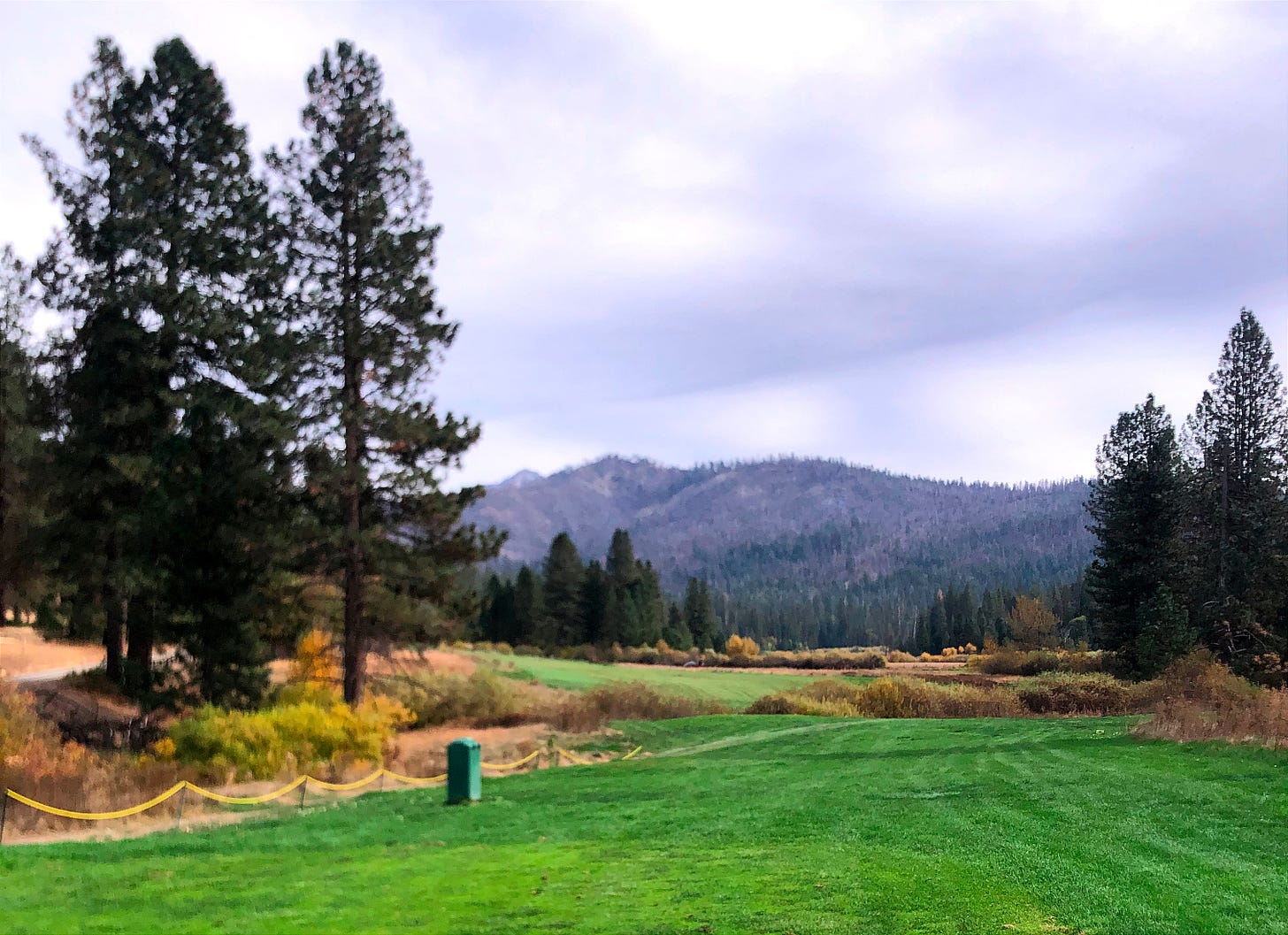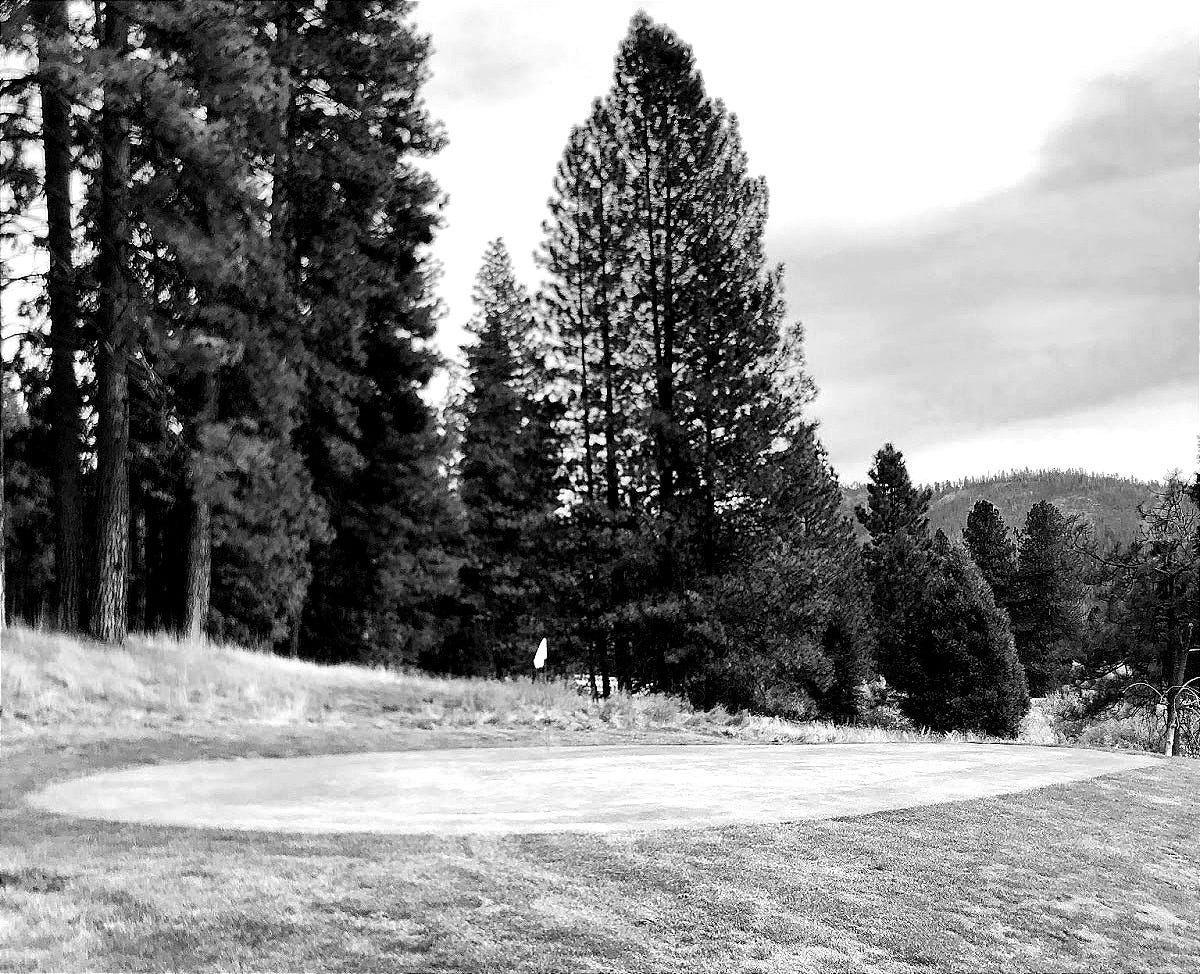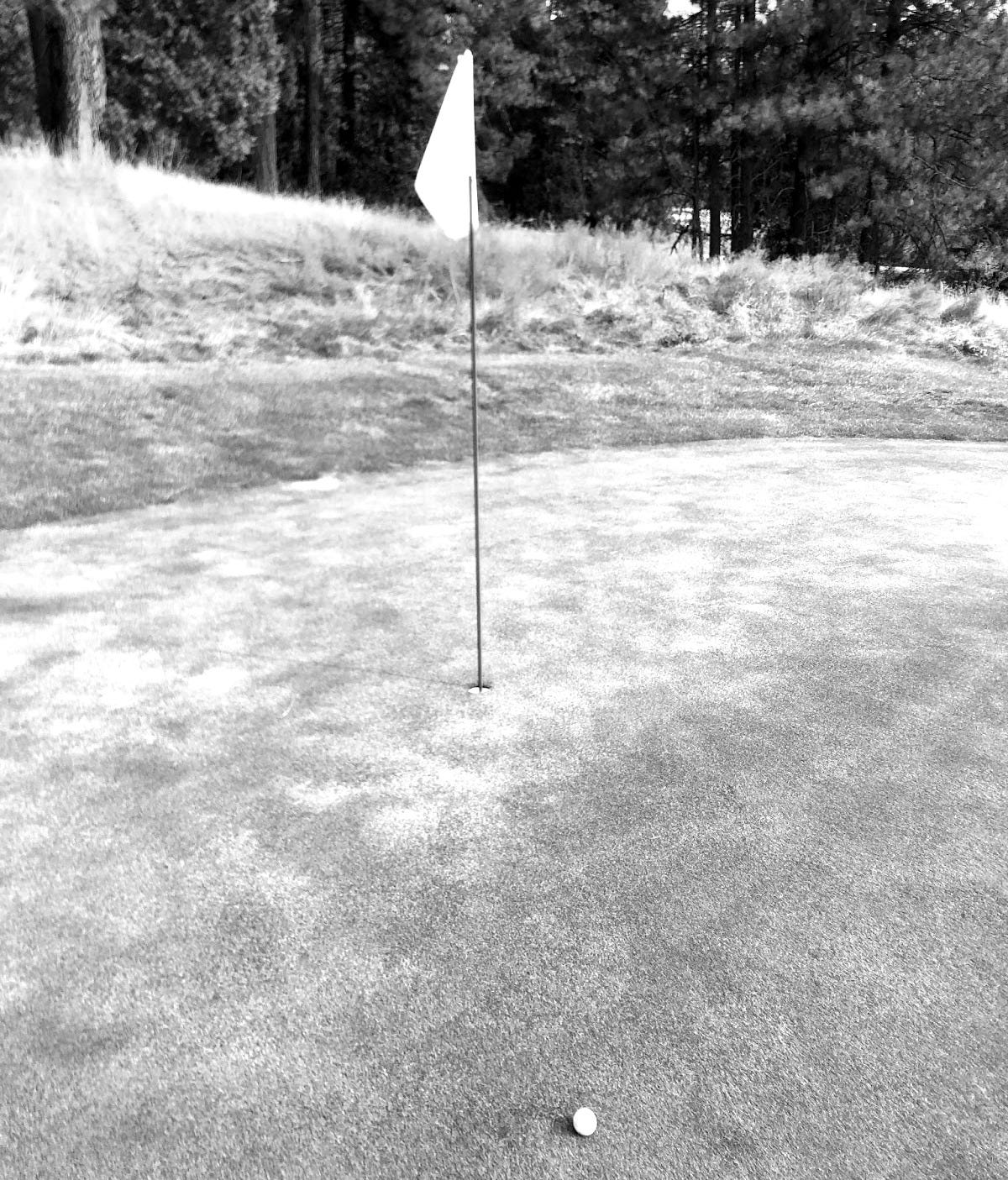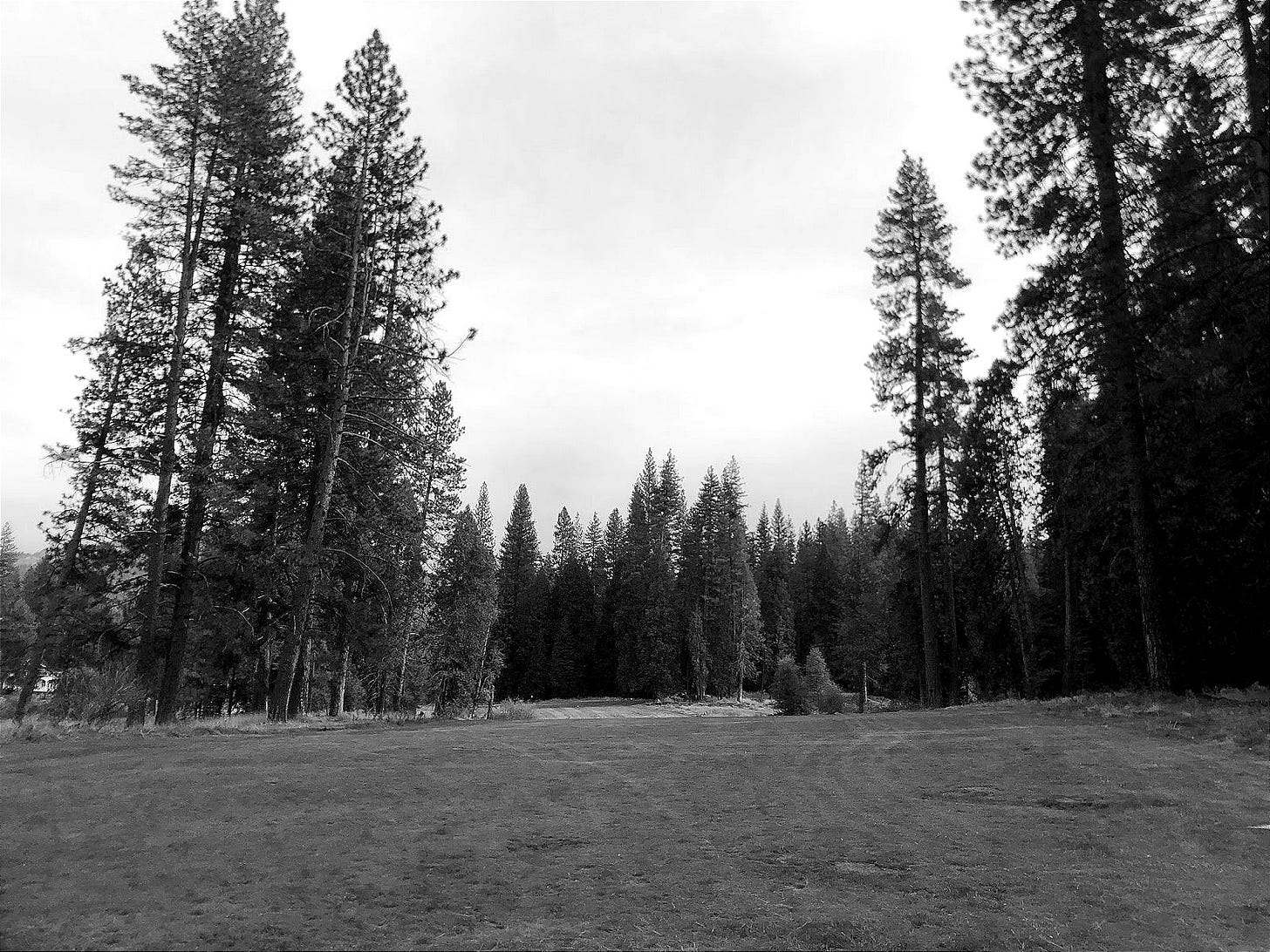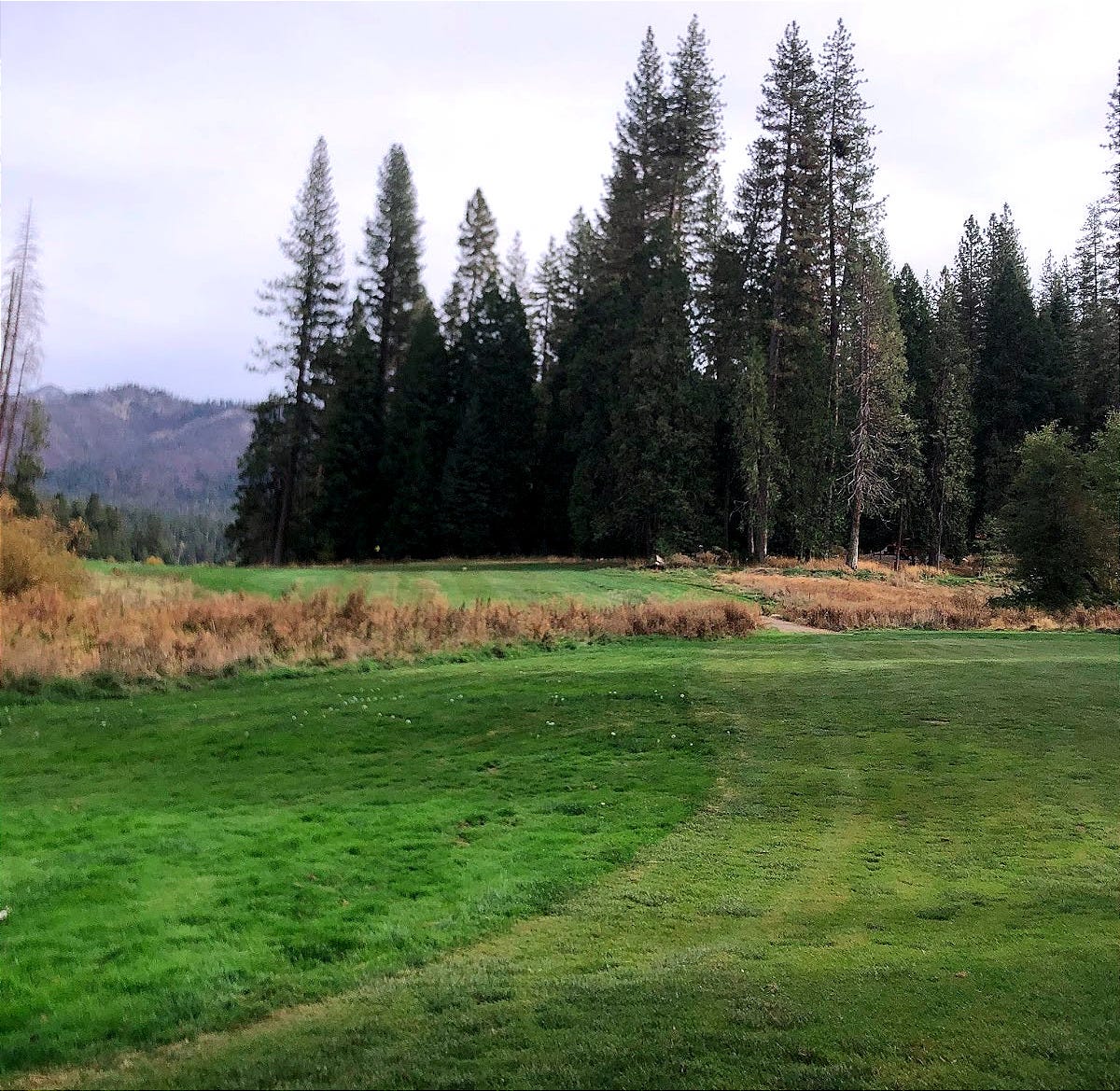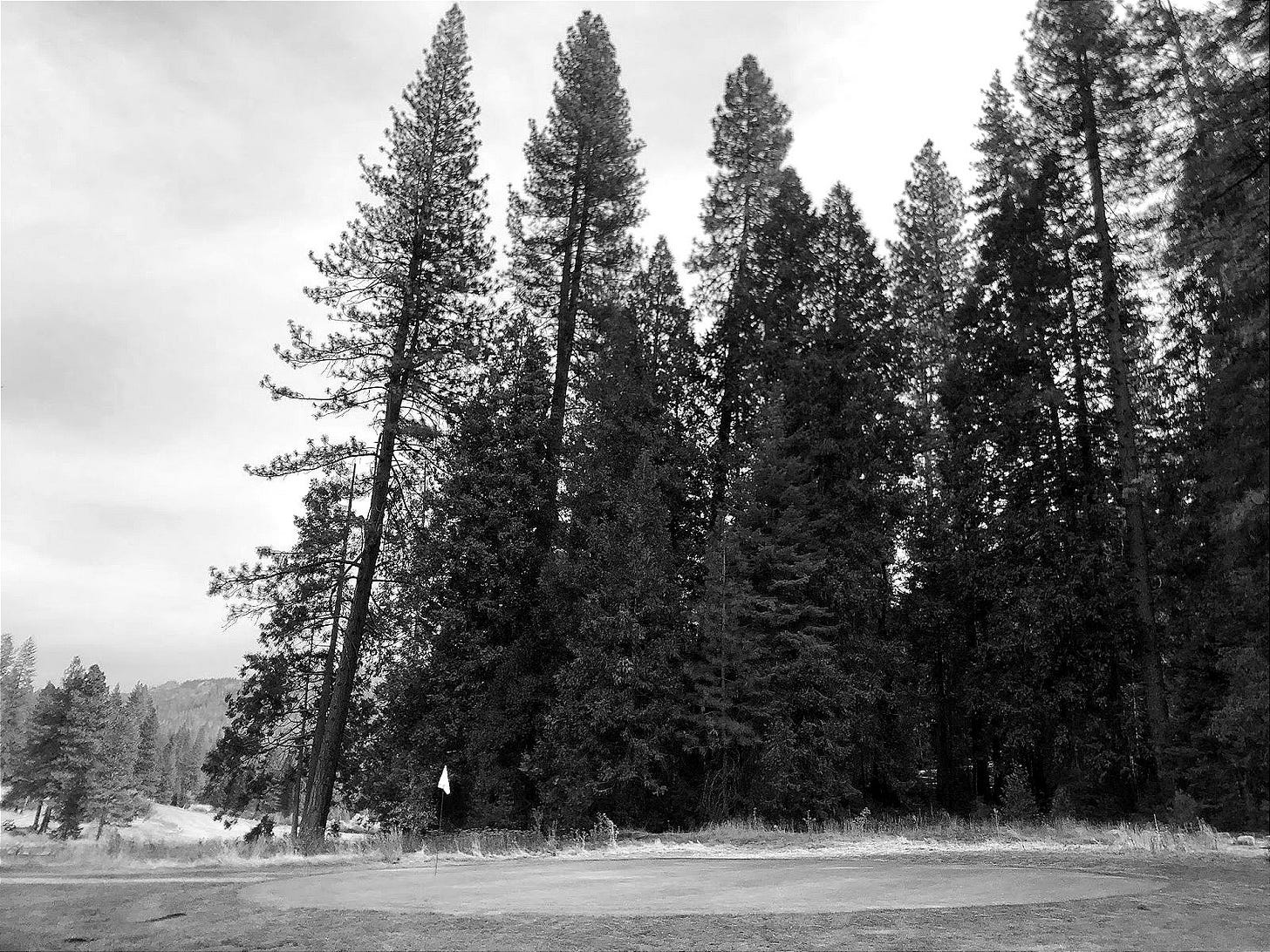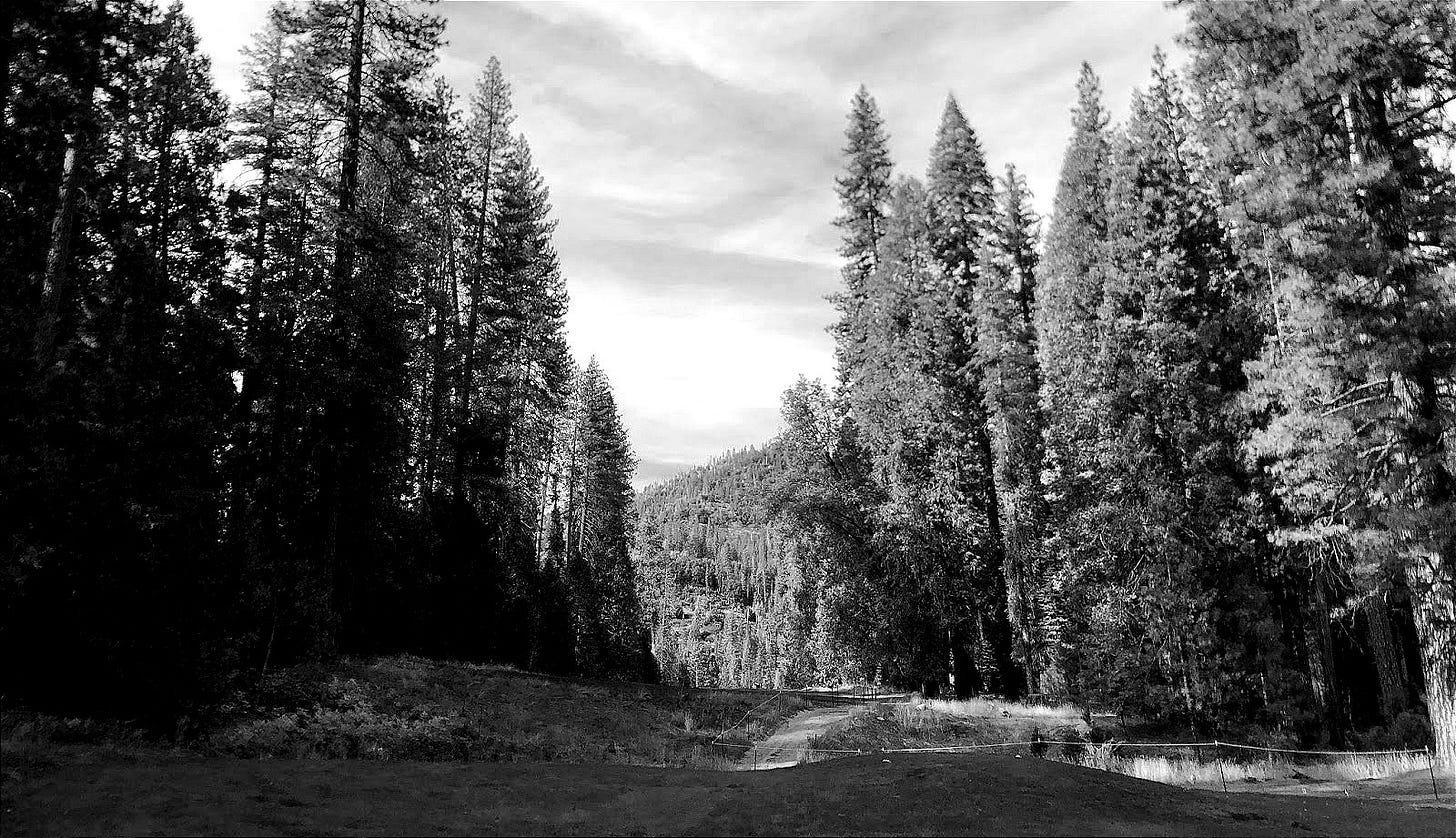Golf Architecture in Yosemite National Park
Wawona Golf Course is an interesting curiosity in the middle of a vast wilderness.
Pulling through to the gates of Yosemite National Park is refreshing after the long drive. There aren’t really many places in the world that can compare. On this trip, however, I’m not going to Yosemite Valley, where the immense rock faces of El Capitan and Half Dome draw tourists from all over the world. I’m headed to the historic Wawona hotel in southern part of the park, to play its equally historic golf course.
The preservation of our national parks allows people to walk through a previous era in American history. The golf course at the Wawona Hotel is no different. The course was designed by Walter Favarque and completed in 1918;1 it is maintained at an absolute minimalist standard. The simple shaggy fairways are maintained without any herb- or pesticides, and the native grasses adjacent grow wild. Longer grass on the greens hearkens to a time before courses started chasing stimpmeter readings.
To some these conditions might make it a course to skip, but to me they just make it more unique. I’m honestly shocked so few people visit. Sure, this course isn’t going to receive many awards, but that doesn’t mean it has no surprises. I’ve written about it elsewhere, but I thought I would focus here on just a few holes that make this historically interesting course worth playing.
Hole 1, par 5, 464 yards
The opening hole challenges players with a tilted fairway that forces players to consider the tradeoffs between control and power. The hole is a short par five, but plays way uphill. The drive plays over a creek, after which the hole begins to move left. The slight left turn is in contrast with the rightward tilt of the fairway.
This fairway tilt complicates the second shot. Shots should tend to miss right, which isn’t the worst miss, but it will give players more elevation to deal with when getting onto the green. The layup is very straightforward and there is plenty of room for error.
The green itself is cut into the top of the hill, and isn't particularly complex. Downhill chips from behind the green should be tricky, but all in all, this is an opening par five that presents players with a firm handshake and might tempt more aggressive players to bite off more than they can chew. It’s a fun hole and one that makes you think.
Hole 5, par 4, 349 yards
The fifth might surprise players as they reach the tee, as this is the first completely blind shot on the course. The tee shot plays up to, and possibly over, a wide ridge. The line of play is fairly clear from the gap in the pines, but players need to make sure they have enough loft to get over the ridge in front of them.
Once up at the ridge, the approach is visible and features a sizable crossing hazard in the form of a creek with a significant amount of native area surrounding it. There is plenty of run up to the green, which may be helpful if you end up with a downhill lie coming off the ridge.
The green slopes strongly back-right to front-left, so shots should hold easily, but will likely kick left if they reach the green. Players will want to stay below the hole if possible here, because even though the green speeds are slow, it’s entirely possible to send one way farther than intended on this green.
A par is a very reasonable score here, but it needs to be earned. The beauty and nuances to this hole make it one of the most memorable.
Hole 7, par 4, 402 yards
The seventh is possibly the most beautiful hole on the course, and is probably the most fun. A blind tee shot plays up to, and possibly over, a sharp ridgeline. After that, the hole plummets down to a fallaway green, that tilts away from the approach, with a couple of bunkers adjacent and even more danger behind the green.
The tee shot is narrow and risky. Accuracy here is far more important than distance. A conservative approach, just playing up to the ridge, is perfectly acceptable, but getting over the ridge with the right ball flight can lead to miles of rollout, even an the shaggy fairway.
The view on top of the ridge is exceptional. And no matter where the tee shot ends up, the approach will be way downhill. Judging this distance means both adjusting for the elevation change on the hole and accounting for the thinner air of the 4000 foot altitude. To complicate this even more, perfectly landing a shot on the green might not even work. It might not hold, because the green gently slopes away from the player. Some hole locations might actually require the player to aim short of the green and try to roll the ball on.
No matter what, don’t miss long. Being behind the green is not good. The rough is thick and the native behind is real trouble. The green itself is tricky and has a couple of contours that don’t leave an easy two-putt.
Consider a visit if you’re in the area
The course is certainly worth a visit for folks who are interested in golf history or extremely unique courses. That said, there is nothing particularly exceptional about the course beyond its unique location and place in American history. Anyone who is concerned with ‘correct’ course maintenance will likely find the course unkempt or even unplayable. However, folks who want to talk a stroll through a previous era of golf will be more than pleased with what they find. A memorable course, with more than a few interesting holes, and a few that are extremely challenging.
No tee times are required, and they only get a few patrons per day, so if you visit during the golf season (early May - late October), and you’ll likely be on the course immediately. Just remember that Yosemite now requires reservations to drive into the park in the summer. I was lucky enough to visit the course on the last day of the season this year and have tried to update the wiki entry with as much information that I could: https://golfcourse.wiki/course/wawona_golf_course-yosemite_national_park
Van Ommeren, Alice. Yosemite's Historic Hotels and Camps. United States, Arcadia Publishing, 2013.






